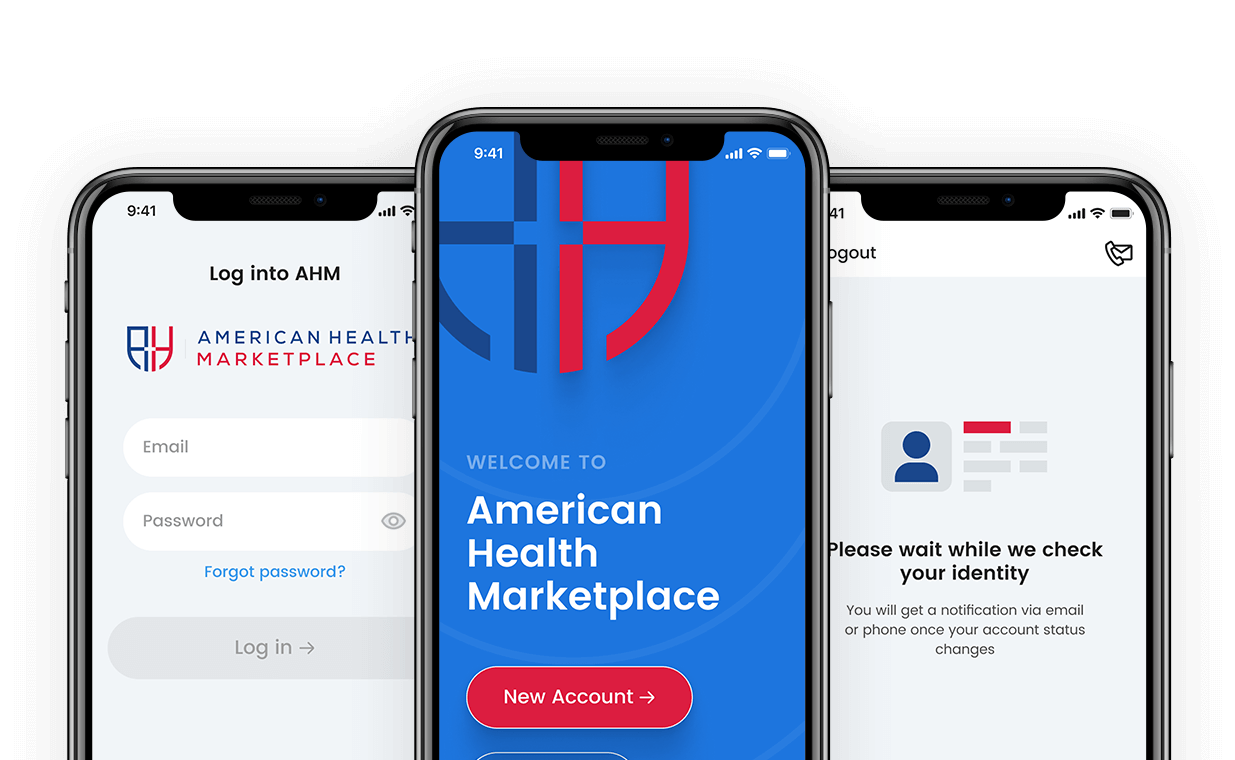American Health Marketplace: A Comprehensive Guide to Understanding and Navigating Healthcare Options

The American health marketplace, a crucial component of the U.S. healthcare system, plays a significant role in how individuals access health insurance and medical services. With the ever-evolving landscape of healthcare policies and programs, it’s essential to understand the intricacies of the marketplace, its benefits, challenges, and the overall impact it has on American citizens. This article delves into the workings of the American health marketplace, exploring its origins, structure, enrollment processes, and its role in promoting healthcare access and affordability.
Understanding the American Health Marketplace
The American health marketplace, also known as the Health Insurance Marketplace, was established under the Affordable Care Act (ACA) in 2010. The primary goal of the ACA was to increase the number of insured Americans, reduce healthcare costs, and improve the quality of care. The marketplace serves as a platform for individuals and families to compare and purchase health insurance plans, making it easier to find coverage that meets their needs and budget.
1.1 Key Features of the Marketplace
- Online Platform: The marketplace provides an online platform where users can browse available health insurance plans, compare prices, and assess benefits.
- Subsidies: Individuals and families may qualify for financial assistance based on their income, which can significantly reduce the cost of premiums and out-of-pocket expenses.
- Standardized Plans: The marketplace categorizes plans into four metal tiers—Bronze, Silver, Gold, and Platinum—based on their coverage levels and costs, making it easier for consumers to choose the right plan.
1.2 Types of Coverage Offered
The marketplace offers several types of health insurance plans, including:
- Individual Plans: Designed for individuals who do not have access to employer-sponsored insurance.
- Family Plans: For families seeking comprehensive coverage for all members.
- Medicaid and CHIP: The marketplace facilitates access to Medicaid for low-income individuals and the Children’s Health Insurance Program (CHIP) for children in families with incomes too high to qualify for Medicaid but too low to afford private coverage.
The Structure of the American Health Marketplace
The structure of the American health marketplace is essential for its functioning and effectiveness. Understanding how it operates can help individuals navigate the system more efficiently.
2.1 Federal vs. State Marketplaces
The ACA allows states to establish their own health insurance marketplaces or utilize the federal marketplace, HealthCare.gov. As of now, 18 states and the District of Columbia operate their own marketplaces, while 32 states rely on the federal platform.
- State Marketplaces: These marketplaces may offer unique plans, benefits, and subsidies tailored to the state’s population.
- Federal Marketplace: The federal marketplace provides a standardized approach, ensuring a consistent user experience across states.
2.2 Enrollment Periods
Enrollment in the marketplace is limited to specific periods known as Open Enrollment Periods (OEP). During this time, individuals can enroll in new plans, switch plans, or make changes to their existing coverage. The OEP typically occurs annually, starting in the fall.
- Special Enrollment Periods (SEPs): Certain life events, such as marriage, the birth of a child, or loss of other coverage, may qualify individuals for a SEP, allowing them to enroll outside of the OEP.
How to Navigate the American Health Marketplace
Navigating the American health marketplace can seem daunting, especially for first-time users. However, with the right knowledge and tools, individuals can effectively find a plan that suits their needs.
3.1 Creating an Account
To access the marketplace, individuals must create an account on HealthCare.gov or their state’s marketplace website. This process involves providing personal information, such as name, address, and household size.
3.2 Comparing Plans
Once registered, users can browse and compare available plans based on various factors, including:
- Premiums: The monthly cost of the insurance plan.
- Deductibles: The amount the insured must pay out of pocket before the insurance kicks in.
- Coverage Network: The list of doctors, hospitals, and specialists covered under the plan.
3.3 Understanding Financial Assistance
One of the most significant advantages of the marketplace is the availability of financial assistance. Individuals and families with incomes between 100% and 400% of the federal poverty level (FPL) may qualify for premium tax credits to help lower their monthly premiums. Additionally, those with incomes below 250% of the FPL may be eligible for cost-sharing reductions, which can help lower out-of-pocket costs.
3.4 Enrolling in a Plan
After comparing plans and determining eligibility for financial assistance, users can complete the enrollment process. This step typically involves selecting a plan, confirming personal details, and providing any required documentation. It’s crucial to keep track of enrollment deadlines to ensure continuous coverage.
Challenges Facing the American Health Marketplace
While the American health marketplace has made significant strides in increasing healthcare access, several challenges persist.
4.1 Complexity of Plans
The variety of plans available can be overwhelming for consumers. Understanding the differences between plan types, coverage options, and costs can lead to confusion and potential misinformed decisions.
4.2 Affordability Issues
Despite subsidies, some individuals still find it challenging to afford premiums and out-of-pocket costs, particularly those with lower incomes or chronic health conditions. The rising cost of healthcare continues to be a pressing issue for many Americans.
4.3 Political Uncertainty
Changes in political leadership can lead to fluctuations in healthcare policy, creating uncertainty for consumers. Ongoing debates over the ACA and potential reforms may affect the stability and availability of health insurance options.
4.4 Enrollment and Awareness
Despite efforts to promote the marketplace, many Americans remain unaware of their options or how to navigate the system. Outreach efforts to educate individuals about available plans and enrollment processes are essential to ensure maximum participation.
The Impact of the American Health Marketplace
The American health marketplace has significantly impacted the healthcare landscape, leading to improvements in coverage rates and health outcomes.
5.1 Increased Coverage Rates
Since the launch of the marketplace, millions of Americans have gained access to health insurance. The uninsured rate has dropped significantly, particularly among low-income populations and previously uninsured groups.
5.2 Preventive Care Access
With insurance coverage, more individuals can access preventive care services, such as vaccinations, screenings, and wellness check-ups, which can lead to early detection and treatment of health issues.
5.3 Improved Health Outcomes
Access to health insurance has been linked to better health outcomes, as individuals are more likely to seek medical care, adhere to treatment plans, and manage chronic conditions effectively.
Future of the American Health Marketplace
As the healthcare landscape continues to evolve, the future of the American health marketplace will depend on several factors, including policy changes, technological advancements, and consumer behavior.
6.1 Policy Developments
Ongoing discussions regarding healthcare reforms will shape the direction of the marketplace. Policymakers must balance affordability, access, and quality of care to address the needs of diverse populations.
6.2 Technological Advancements
The integration of technology in the marketplace can enhance user experience and streamline enrollment processes. Improved data analytics can also help identify trends and gaps in coverage, allowing for targeted outreach efforts.
6.3 Consumer Empowerment
Empowering consumers with information and resources can enhance their ability to navigate the marketplace effectively. Education initiatives that focus on health literacy and insurance basics will be crucial in helping individuals make informed choices.
Conclusion
The American health marketplace is a vital component of the U.S. healthcare system, providing millions of individuals with access to essential health insurance coverage. While challenges remain, the marketplace has made significant strides in improving healthcare access and affordability. As policymakers, healthcare providers, and consumers continue to navigate the evolving landscape, the importance of the marketplace in promoting health equity and improving health outcomes will remain paramount.
Key Takeaways
- The American health marketplace was established under the ACA to increase healthcare access and affordability.
- It offers various types of health insurance plans, including individual, family, Medicaid, and CHIP options.
- Navigating the marketplace involves comparing plans, understanding financial assistance, and enrolling during designated periods.
- Ongoing challenges include plan complexity, affordability issues, political uncertainty, and enrollment awareness.
- The marketplace has positively impacted coverage rates and health outcomes but requires ongoing improvements and consumer education to enhance effectiveness.
The American health marketplace represents a significant step forward in addressing the healthcare needs of the American population. By fostering a better understanding of its structure and navigating the system effectively, individuals can take control of their healthcare options, ultimately leading to improved health and well-being. Keep reading on Prizechecker. com.

